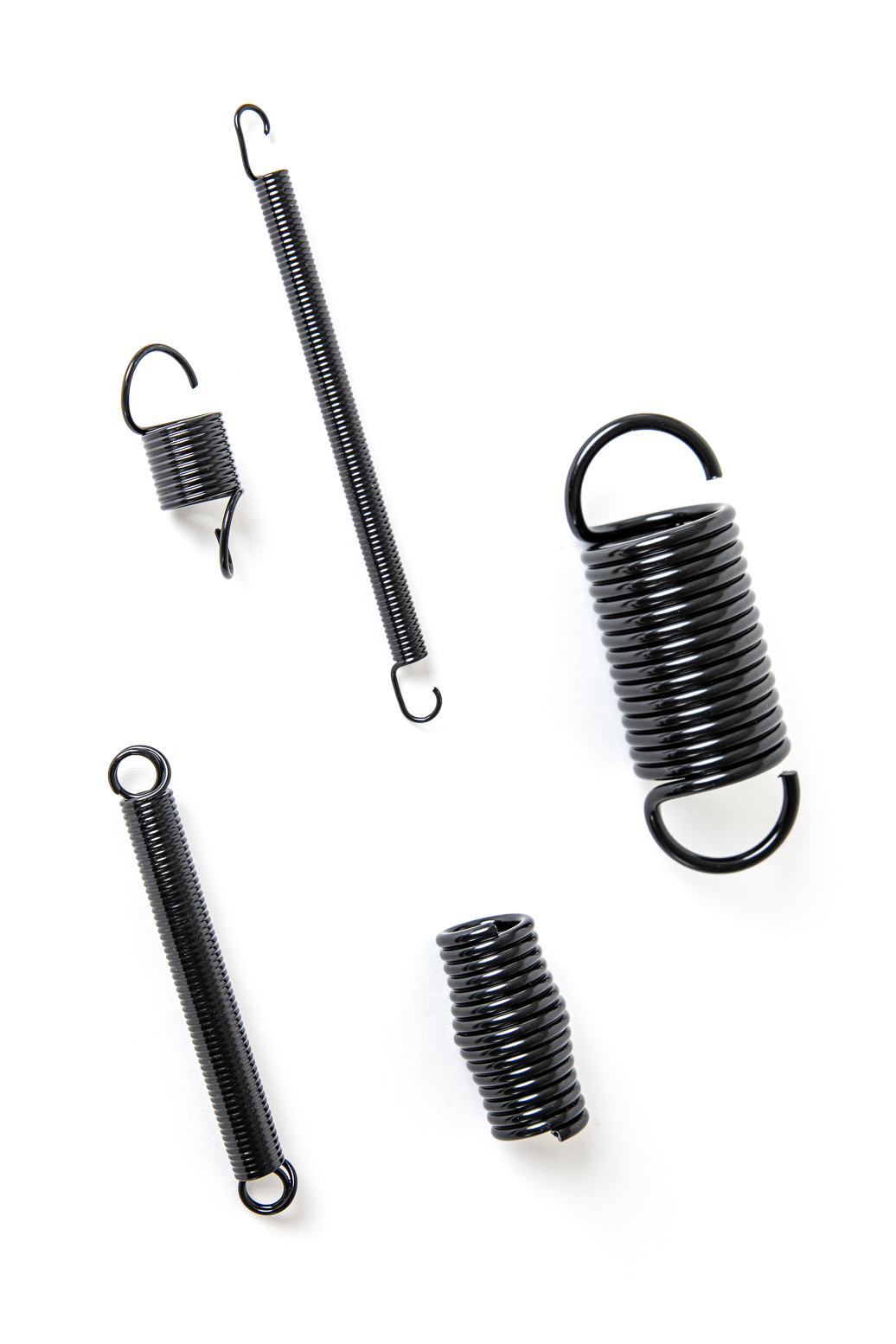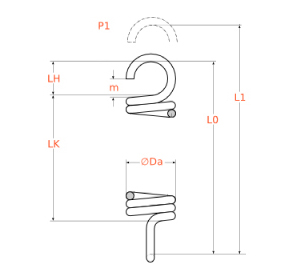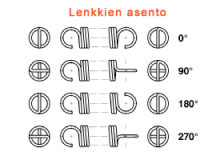Tension spring
Tension spring
Tension spring is a spring that exerts force when the spring is extended.
The force of the tension spring is defined by the spring constant, i.e. the required load for each extended millimetre. Unlike compression springs, the tension spring force is also affected by the spring’s initial tension. Initial tension refers to the force that is required to separate the coils of the spring. In other words, initial tension defines how strongly the coils are held together. Initial tension can be determined on a case-by-case basis so that the required force can be accurately achieved.
The force of the spring comes from its physical dimensions and initial tension:
- wire diameter
- frame diameter
- total length
- number of coils
- force that it takes to separate the coils (initial tension)
A typical tension spring is shaped like a cylinder with hooks on both ends. The spring is attached by the hooks; the shape of the hooks depends on the spring’s intended use. The hooks can be close to or far from the frame, on the sides or in the middle. The ends of the tension spring can be equipped with durable separate hooks, or the spring can be manufactured blank with fasteners attached to the ends.
Tension springs with d0.3-d20.0 mm spring wires
By changing the physical proportions of the spring, we can influence the spring’s force, movement and number of use cycles. Our design service is happy to help you design your springs and hooks as well as calculate the appropriate forces. A spring that is tailored for its exact purpose is a functional and safe piece that saves expenses. Jousivesa manufactures tension springs with d0.3mm-d20.0 mm spring wires.
Whether you need one speciality spring or springs in bulk, our modern machinery and motivated staff are always ready to help!

Tension spring
Tension spring is a spring that exerts force when the spring is extended.
The force of the tension spring is defined by the spring constant, i.e. the required load for each extended millimetre. Unlike compression springs, the tension spring force is also affected by the spring’s initial tension. Initial tension refers to the force that is required to separate the coils of the spring. In other words, initial tension defines how strongly the coils are held together. Initial tension can be determined on a case-by-case basis so that the required force can be accurately achieved.
The force of the spring comes from its physical dimensions and initial tension:
- wire diameter
- frame diameter
- total length
- number of coils
- force that it takes to separate the coils (initial tension)
A typical tension spring is shaped like a cylinder with hooks on both ends. The spring is attached by the hooks; the shape of the hooks depends on the spring’s intended use. The hooks can be close to or far from the frame, on the sides or in the middle. The ends of the tension spring can be equipped with durable separate hooks, or the spring can be manufactured blank with fasteners attached to the ends.
Tension springs with d0.3-d20.0 mm spring wires
By changing the physical proportions of the spring, we can influence the spring’s force, movement and number of use cycles. Our design service is happy to help you design your springs and hooks as well as calculate the appropriate forces. A spring that is tailored for its exact purpose is a functional and safe piece that saves expenses. Jousivesa manufactures tension springs with d0.3mm-d20.0 mm spring wires.
Whether you need one speciality spring or springs in bulk, our modern machinery and motivated staff are always ready to help!
Material and surface treatment
All tension springs are made from spring steel. The type of spring steel is determined by the intended purpose. When choosing materials, the external operating conditions must be taken into account. This includes factors such as humidity, temperature, and the load targeted at the spring. At Jousivesa, we only use high-quality spring steel.
Tension springs can also go through surface treatment to achieve better corrosion resistance or for visual reasons. Some of the most common surface treatment options for springs are zinc plating, powder coating and shot peening.
Measurements of tension springs
Measurements of tension springs
The most important dimensions for tension springs
- Wire diameter (d)
- Spring outside diameter (Da)
- The free total length from the inner edge of the hook to the
- inner edge of the other hook (L0)
- Frame length (LK) or the number of coils (if)
The most important dimensions for tension springs
- Wire diameter (d)
- Spring outside diameter (Da)
- The free total length from the inner edge of the hook to the
- inner edge of the other hook (L0)
- Frame length (LK) or the number of coils (if)






